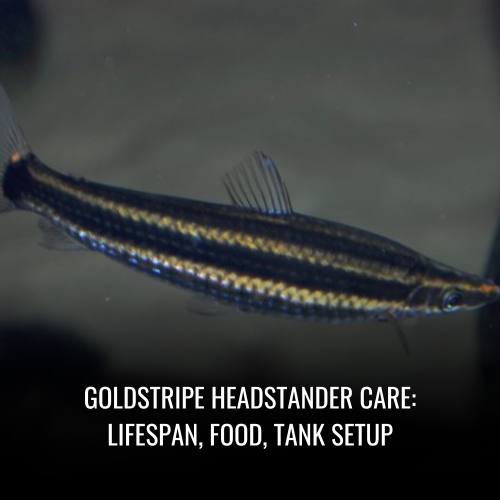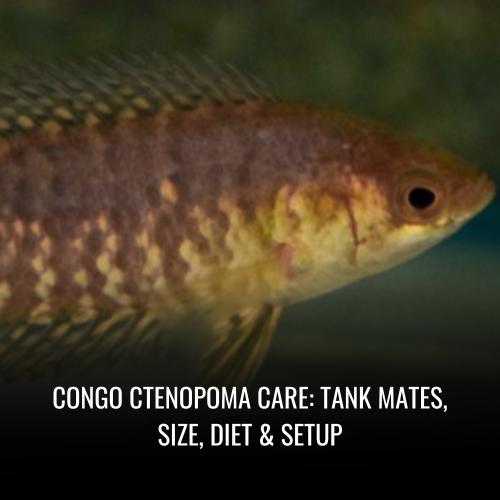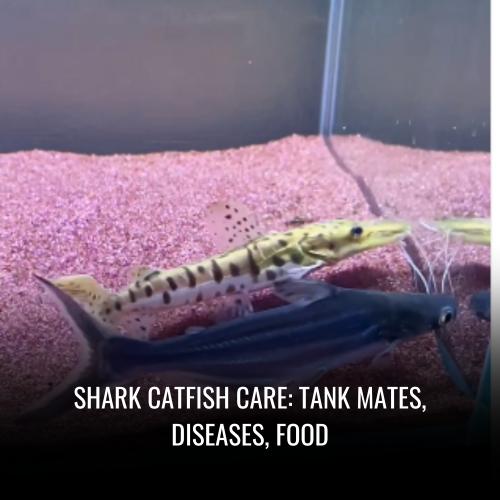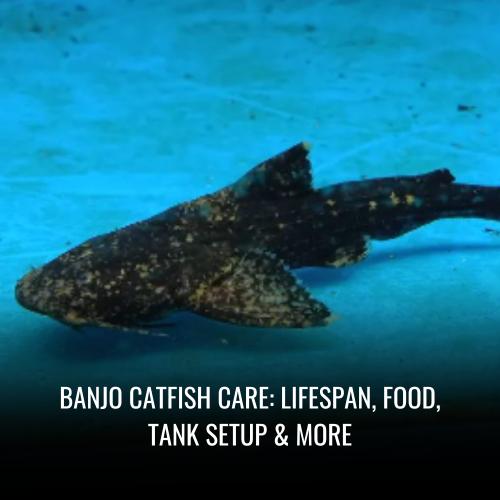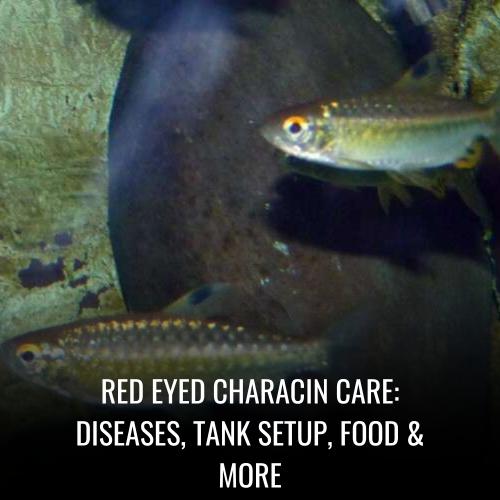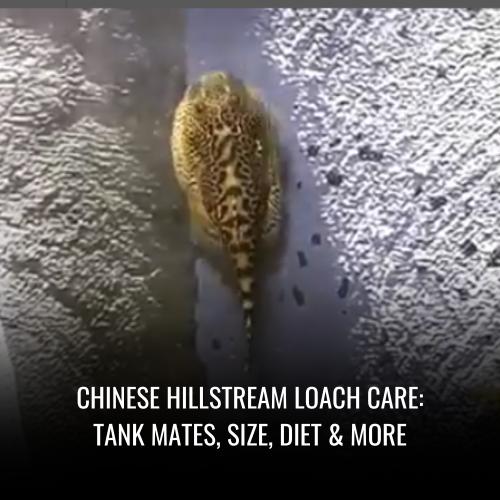Brown hoplo Care: Lifespan, Food, Tank Setup & More
This post contains affiliate links. As an Amazon Associate, we earn from qualifying purchases.
The Brown Hoplo, scientifically known as Megalechis thoracata, is a species of freshwater fish native to South America. With an average size of around 4 inches and a lifespan of 5-8 years, these peaceful creatures are commonly found in densely vegetated rivers and streams. Their distinct appearance and behaviors make them a captivating addition to any aquarium.
| Property | Information |
|---|---|
| Scientific Name | Megalechis thoracata |
| Common Name | Brown Hoplo |
| Family | Callichthyidae |
| Usual Size in Fish Tanks | 4 inches |
| Recommended pH Range | 6.0 – 7.5 |
| Recommended Water Hardness | 4 – 12 dGH |
| Recommended Temperature | 72-79°F (22-26°C) |
| Reproduction | Egg Layer, External Fertilization |
| Origin | South America |
| Temperament to Own Species | Peaceful, Schooling |
| Temperament to Other Fish | Peaceful, Compatible with Most Species |
| Usual Place in the Tank | Bottom |
| Lifespan | 5-8 years |
| Tank Size Requirement | 20 gallons or larger |
| Filtration System | Canister or Sponge Filter |
| Sexual Dimorphism | Males have slightly thicker pectoral fins |
| Substrate Cleaning | Beneficial for a clean substrate |
The brown hoplo, scientifically known as Hoplosternum littorale, is a resilient species of catfish originally from South America. It has adapted to Florida’s ecosystems, becoming prevalent in lakes, rivers, and a variety of freshwater habitats such as Lake Trafford and Lake Okeechobee. Notably, this exotic catfish possesses an impressive ability to breathe both through its gills and intestines. It swallows atmospheric oxygen, which facilitates survival in oxygen-depleted environments.
Physical traits of the brown hoplo include a slightly subterminal mouth and long maxillary barbels. The fish’s body is somewhat compressed with a dark brown to gray coloration, and it is covered by two rows of protective bony plates. Barbell appendages grace its chin, assisting in foraging for its diet predominantly composed of benthic invertebrates and plant matter.
Distinctive reproductive behavior is seen as brown hoplos construct bubble nests amidst lots of vegetation for their eggs. Regrettably, since its first documentation in the Indian River Lagoon system in 1995, it is now deemed an invasive species in Florida, leading to concerns about its impact on local ecosystems.
Scientific Name
The Brown Hoplo Catfish, with its scientific moniker Hoplosternum littorale, occupies a distinctive spot within the animal kingdom’s vast taxonomy. It is classified under:
| Taxonomic Classification | Information |
|---|---|
| Kingdom | Animalia |
| Phylum | Chordata |
| Subphylum | Vertebrata |
| Class | Actinopterygii |
| Subclass | Neopterygii |
| Order | Siluriformes |
| Family | Callichthyidae |
| Genus | Hoplosternum |
This nomenclature is validated by the Integrated Taxonomic Information System’s comprehensive online database, which is a testament to the species’ acknowledged scientific identity. Positioned at the genus level, Hoplosternum littorale is an exemplary member of the Hoplosternum genus. Its exceptional ability to breathe atmospheric oxygen briefly when confronted with low oxygen levels in its habitat exemplifies its evolutionary adaptability. Originating in the tepid terrains of South America, the brown hoplo catfish thrives effectively in the slow-moving streams of its native regions.
Average Size
The Brown Hoplo, Hoplosternum littorale, is a moderately-sized tropical fish, commonly housed in aquariums. In such environments, the average size of these residents typically ranges from 17 cm to 20 cm (6.69 – 7.87 inches). Remarkably, these fish demonstrate rapid growth, stretching to about 2 inches within just a couple of months of their life. Nonetheless, despite their swift early development, it’s noteworthy that adult Brown Hoplos seldom surpass the 10-inch mark.
To ensure optimal growth and health for Brown Hoplo in captivity, maintaining water parameters within a specific range is crucial. The recommended pH level conducive to their well-being falls between 6.5 and 7.5. Furthermore, water hardness should ideally lie within 6 – 22°N (107.14 – 392.86 ppm).
During the reproductive phase, breeding males display a fascinating transformation. Their pectoral spines not only take on a vibrant, reddish hue but also develop hooks at the tips, a unique adaptation for territorial defense against rival males.
| Growth Phase | Size | Remarks |
|---|---|---|
| 2 months old | ~2 inches | Fast initial growth |
| Adult | <10 inches | Rarely exceed this size in adulthood |
| Water pH Range | 6.5 – 7.5 | Optimal for health |
| Water Hardness | 6 – 22°N | Corresponds to 107.14 – 392.86 ppm |
| Breeding Males | Displays change | Enlarged, red pectoral spines with hooks |
With specific care to their aquatic environment, Brown Hoplos can flourish, adding dynamic life to both aquariums and their native freshwater habitats across South America.
Lifespan
The Brown Hoplo, Hoplosternum littorale, boasts a relatively modest lifespan, with an expectancy to grace aquariums or their native watery habitats for up to four years. To maximize their years, providing an optimal environment is essential, as it directly influences their longevity and wellbeing.
| Lifespan Factor | Consideration |
|---|---|
| Lifespan | Up to 4 years |
| Origin | South America |
| Habitat Range | From Venezuela to Argentina |
| Oxygen Adaptation | Breathes from the surface |
| Maximum Size | 10 inches |
| Tank Compatibility | Peaceful, suitable for community tanks |
A well-maintained Brown Hoplo will enjoy the entirety of its lifespan when kept in conditions that closely imitate its native South American range, where it is known for its resilience in swampy, stagnant waters. This adaptability is largely due to its capability to breathe atmospheric oxygen directly from the surface. Enthusiasts should note the species’ peaceful nature, making it an excellent inhabitant for community tank settings. The ultimate goal for keepers is to replicate the conditions in which these unique fish thrive, ensuring a full and healthy life.
Natural Habitat
The Brown Hoplo catfish, a member of the Callichthyidae family, has entrenched itself within the diverse freshwater ecosystems of eastern South America, and more recently, across central and south Florida. Prolific in habitats ranging from mud-lined streams to slow-moving rivers and marshy ponds, they have also adapted seamlessly to man-made environments like ditches and borrow pits.
| Habitat Features | Brown Hoplo Preferences |
|---|---|
| Water Type | Freshwater, including brackish |
| Bottom Type | Muddy, supports benthic life |
| Vegetation | Required for larvae and juveniles |
| Water Motion | Slow-moving or stagnant |
| Oxygen Levels | Can be low; air-gulping ability |
Larvae and juveniles exhibit a preference for the protective shallows brimming with vegetation, vital for their early life stages. As they mature, adults venture into deeper, open waters where their foraging prowess comes to the fore. Remarkably resilient, Brown Hoplos possess an air-gulping ability, allowing them to survive in waters with diminished oxygen and elevated hydrogen-sulfide levels. Reflecting their intricate life cycle, males of the species craft floating nests from the cover of shoreline vegetation, establishing a safe haven for spawning.
- Adaptability: Tolerates low oxygen and high hydrogen-sulfide levels.
- Nesting: Males construct floating nests in vegetation.
- Youth Habitat: Prefers shallow, vegetative waters.
Appearance
The captivating appearance of Brown Hoplo catfish can vary remarkably based on several factors. Notice that fish personalities shine through their looks; mood fluctuations and the social hierarchy within their community can all influence their outward coloration.
| Influencing Factors | Description |
|---|---|
| Mood | Color changes with emotions |
| Age | Juveniles less colorful |
| Gender | Males, females may differ |
| Social Status | Dominance affects appearance |
Fresh from their natural habitat or a journey, Brown Hoplo may look rather subdued. The stresses of shipping often result in a temporary color loss, making them appear faded upon arrival. Yet, do not be misled by this initial observation.
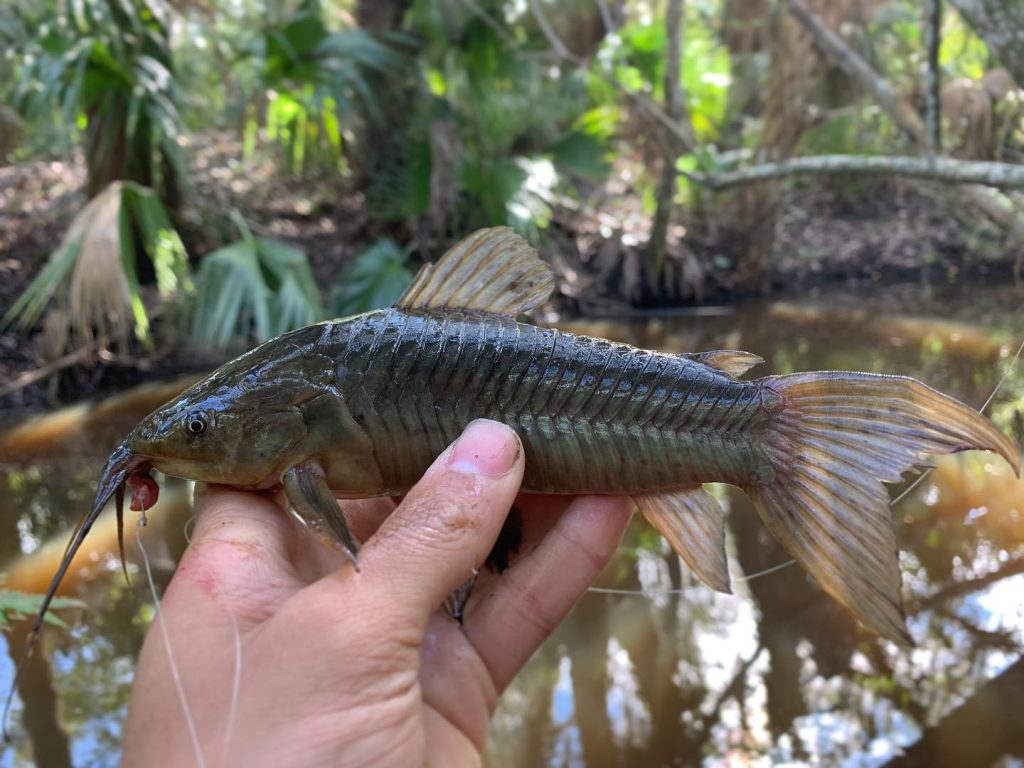
The images displayed on websites typically showcase a spectrum, from the vibrant hues of mature adults to the subtler shades of the youth. This serves as a visual guide rather than an exact representation.
- Females vs. Males: Expect significant differences.
- Juveniles: Less colorful than adults.
- Post-Shipping: May appear pale; colors revive later.
Research can unveil the diverse aesthetics of Hoplos, preparing you for the exciting changes as they grow and settle into their new environment.
Behavior & Temperament
In the home aquarium, Brown Hoplo (Hoplosternum littorale) are known for their peaceful and adaptable nature. They commonly exhibit a calm demeanor and are not naturally inclined to be fin nippers. This makes them compatible with a wide variety of tankmates. However, tank owners should be aware that Brown Hoplo can become territorial during breeding season, which may lead to more assertive behavior to defend their bubble nests. Otherwise, they generally show a placid attitude and do not instigate conflict with other fish.
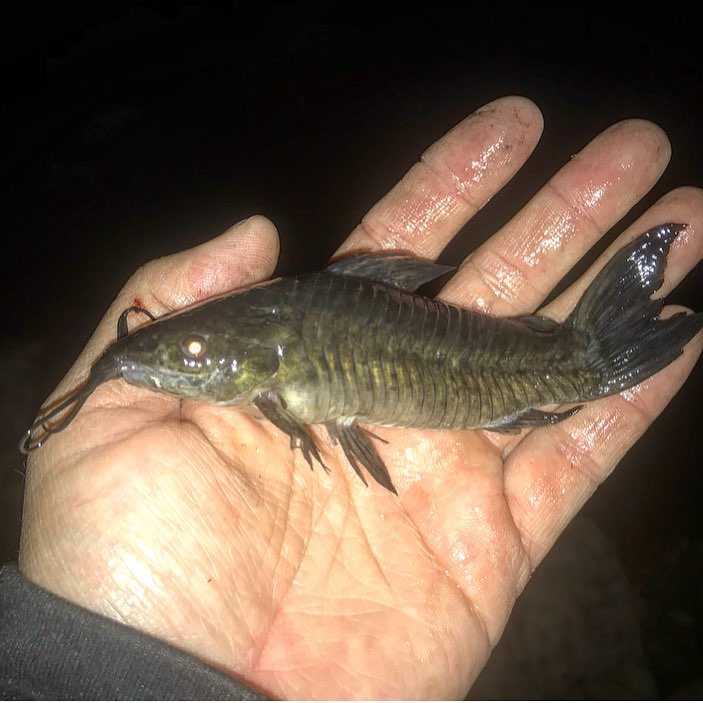
Are Brown hoplo Fin Nippers?
Brown Hoplo are not known to be fin nippers. They are peaceful catfish that coexist well with many other species in a community aquarium. Their non-aggressive nature allows them to be suitable companions for a range of fish types, provided their environmental requirements are complementary.
Are Brown hoplo Aggressive To Each Other & Other Fish?
Generally, Brown Hoplo are not aggressive towards each other or other fish. They thrive in groups and exhibit amicable behavior towards their own kind and other species. However, like many fish, they may display some territorial tendencies at times, such as during the breeding period when protecting their nests. These territorial instincts can occasionally lead to mild aggression, especially if they are feeling overcrowded or lack adequate hiding places within the aquarium.
Are Brown hoplo Friendly To Each Other & Other Fish?
Brown Hoplo exhibit friendly and social behavior towards one another and are known to safely cohabitate with other fish species in a community tank. They often interact peacefully during feeding times and can show social bonds when kept in groups, which highlights the importance of a well-designed aquarium setup that includes sufficient space and resources for all inhabitants.
Are Brown hoplo Schooling Fish?
Brown Hoplo are not considered schooling fish; they are more commonly observed in pairs or small loose groups. In their natural habitat, they gravitate towards water with lower oxygen levels, often using their unique ability to gulp atmospheric oxygen. While they do not school in the traditional sense, they exhibit a level of social interaction and are often seen together, particularly when kept in an aquarium environment.
Can You Have Just One Brown hoplo In The Tank?
While it is possible to keep a single Brown Hoplo, it is not ideal as these fish naturally enjoy the company of their own kind. A solitary Brown Hoplo may become more reclusive and less active. Therefore, to encourage natural behavior and reduce stress, it is beneficial to keep them in a small group.
Do Brown Hoplo Need To Be In Groups?
Yes, Brown Hoplo do best when kept in groups. A grouping of at least three to four individuals is recommended to promote a sense of security and allow for the expression of natural behaviors. Additionally, a proper group setting can help minimize any potential territorial behavior and ensure that the catfish are more active and engaged in their environment.
Food & Diet
Brown Hoplo, scientifically known as Hoplosternum littorale, are an intriguing species that inhabit a variety of freshwater environments. Let’s delve into the dietary habits and preferences of these exotic catfish to understand their role in the aquatic ecosystem and their care requirements in captivity.

Do Brown Hoplo Eat Algae?
While some aquarium fish are known to consume algae as part of their diet, Brown Hoplo are not typically algae eaters. These benthic scavengers have a diet primarily composed of detritus and benthic invertebrates. Although they might incidentally ingest small amounts of algae while foraging, algae do not constitute a significant part of their dietary intake. Brown Hoplo’s preference for meaty foods, such as catfish pellets and blood worms, indicates their carnivorous nature and their limited interest in plant-based food like algae.
Do Brown Hoplo Eat Shrimp?
In the wild, Brown Hoplo’s diet includes a variety of benthic invertebrates, of which shrimp can be a part. These opportunistic feeders are likely to consume shrimp whenever available. In captivity, they readily accept a diet that includes brine shrimp, showcasing their adaptability and preference for meaty foods. This flexibility in diet makes them well suited for the aquarium environment, where they can be provided with shrimp as a nutritional food source.
Do Brown Hoplo Eat Bloodworms?
Bloodworms, known for their rich protein content, are indeed a suitable and often preferred food for Brown Hoplo. These nutritious invertebrates serve as an excellent source of sustenance for these exotic catfish, providing the necessary nutrients to support their health and growth. In aquarium settings, bloodworms are a commonly recommended food, particularly for Brown Hoplo, due to their carnivorous feeding habits and the nutritional value that bloodworms offer.
Do Brown Hoplo Eat Mosquito Larvae?
The natural habitats of Brown Hoplo often coincide with breeding grounds for mosquitoes, making mosquito larvae a likely component of their diet in the wild. Their capability to thrive in environments with low oxygen levels, such as swamps and ditches, aligns with the habitats where mosquito larvae are plentiful. In the context of pest control, Brown Hoplo can potentially help in reducing mosquito populations by preying on their larvae, thus demonstrating an environmental benefit of their predatory nature.
Do Brown Hoplo Eat Planaria?
Given that Brown Hoplo are known for feeding on benthic invertebrates, planaria—a type of flatworm commonly found in freshwater habitats—may indeed be a part of their varied diet. As opportunistic feeders, Brown Hoplo are likely to consume any small invertebrates they encounter, including planaria. This dietary flexibility aids them in adapting to different environments and ensures they have a multitude of food sources available in their natural South American waters as well as in captivity.
Do Brown Hoplo Eat Plants?
While their diet is mainly carnivorous, Brown Hoplo have been observed to consume some amount of plant matter, albeit not as their primary food source. They might ingest plant material incidentally while foraging for their favored prey, or they might consume it out of necessity in the absence of more preferable food options. In aquarium care, while supplementing their diet with meaty foods, it is not necessary to provide them with a significant quantity of plants or plant-based foods, as their demand for such is minimal.
In conclusion, Brown Hoplo showcase a variety of dietary preferences that reflect their adaptable nature and benthic lifestyle. Their penchant for meaty foods, coupled with their occasional intake of plant matter, underscores their reputation as versatile inhabitants of the diverse aquatic environments they occupy, ranging from freshwater systems to slightly brackish waters of South America.
Sexing: Male vs Female
Sexing Neon Blue Gouramis can be quite challenging due to the lack of visible differences between males and females. Unlike many other fish species, there are no distinct physical features that can be used to easily differentiate the two genders.
However, certain behaviors exhibited by Neon Blue Gouramis can indicate their readiness to breed and, consequently, their sex. During the breeding process, the male and female gouramis demonstrate a unique courtship dance where they swim in parallel, gently touching their barbels together. This intricate display is a precursor to reproduction and signifies that they have accepted each other as mates.
Understanding these breeding behaviors is key to determining the sex of Neon Blue Gouramis during the reproductive cycle.
| Behavior | Male | Female |
|---|---|---|
| Parallel Swimming | ✔️ | ✔️ |
| Barbels Touching | ✔️ | ✔️ |
| Bubble Nest Building | ✔️ | ✔️ |
| Egg Laying | ❌ | ✔️ |
| Fertilizing Eggs | ✔️ | ❌ |
| Nest Protection | ✔️ | ❌ |
Brown hoplo Tank Mates
When setting up an aquarium for Brown Hoplo, it’s important to carefully consider their potential tank mates. Brown Hoplo prefer alkaline and hard water environments and are known to thrive even in slightly brackish conditions. This unique preference requires that any tank mate can comfortably share these water parameters.
Aquarium companions should be peaceable species that do not infringe on the vital open swimming spaces required by the Hoplo. The tank’s layout should ideally have plant life concentrated towards the rear and sides to ensure plenty of room for the Brown Hoplo to navigate freely.

In terms of diet, Brown Hoplo are not picky eaters; their meals of choice include catfish pellets, bloodworms, and brine shrimp. Tank mates should not be food competitors, ensuring the Hoplo have ample opportunity to feed.
Below is a table highlighting suitable tank mates that can coexist harmoniously with the Brown Hoplo:
| Suitable Tank Mates | Requirements Matching Brown Hoplo | Notes |
|---|---|---|
| Guppies and Mollies | Tolerate hard, alkaline, and brackish water | Peaceful |
| Swordtails and Platies | Enjoy similar water parameters | Non-aggressive |
| Archer Fish | Can live in brackish water | Require open swimming space |
| Bristlenose Plecos | Peaceful scavengers, not food competitors | Beneficial for algae control |
Choosing companions from the above list can help ensure a healthy and harmonious habitat for your Brown Hoplo.
Aquarium Setup
Creating a suitable aquarium for Brown Hoplo (Hoplosternum littorale) is essential for their health and comfort. These fishes from South America bring a touch of the exotic to any freshwater tank, with their ability to thrive in a variety of freshwater habitats. The ideal setup would be spacious and well-planted, emulating their natural environment while also serving practical purposes. Given the importance of carefully balancing their needs, here’s how to create the perfect home for your Brown Hoplo.
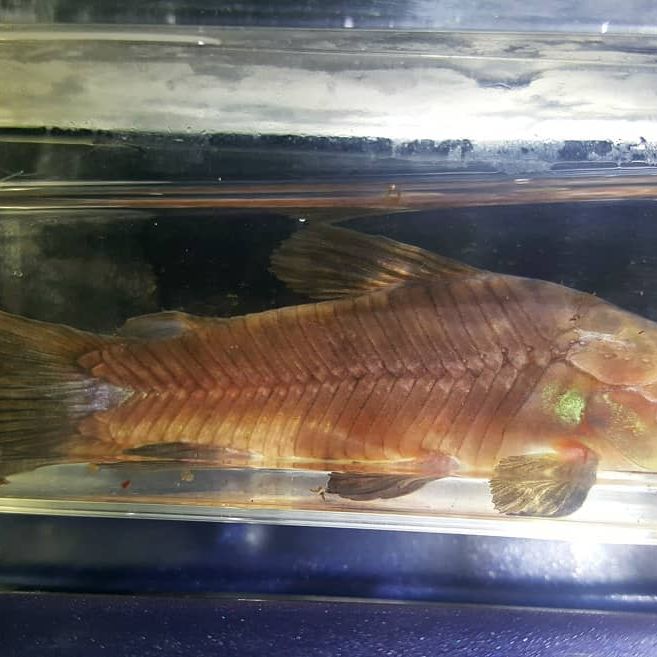
Ideal Tank Size
The recommended minimum tank size for a single Brown Hoplo, which can grow up to 7.87 inches, is 30 gallons. However, as they’re social creatures preferring groups, a larger tank of 50 gallons or more is advised. Not only does this accommodate group dynamics, but it also helps maintain stable water parameters and simplifies tank maintenance.
Ideal Water Parameters
Brown Hoplo flourish in water that is slightly acidic to neutral, with a pH range of 6.5 to 7.5, and they show a remarkable tolerance for various hardness levels, preferring a dGH between 6 to 22°N. They enjoy warmer temperatures, so maintaining the aquarium water between 22 to 27 °C (71.6 to 80.6°F) will keep them in optimal health. Since they inhabit both freshwater and slightly brackish waters, it’s important that any tank mates can also tolerate these conditions.
Filtration
A robust filtration system is a cornerstone of a healthy aquarium for Brown Hoplo. Despite these fish’s capability to breathe atmospheric oxygen, maintaining clean water is paramount. An effective filtration system will help remove harmful waste, promote aerobic bacterial colonies, and preserve the water quality. It’s beneficial to choose a filter that can handle the bioload of a larger tank and ensure it doesn’t create excessive current, as Brown Hoplo prefers calmer waters.
Lighting
Proper lighting is critical, especially if the aquarium includes live plants, which is common in Brown Hoplo habitats. Specialized aquarium bulbs are necessary to support plant growth through photosynthesis. Plants offer shelter and contribute to the water’s oxygenation but require suitable lighting to stay healthy. In addition to plant health, lighting also influences fish behavior and may even play a role in their breeding cycles. Thus, a balanced lighting setup is vital for mimicking natural conditions and fostering a thriving ecosystem.
Common Possible Diseases & Prevention
Crops and plants are susceptible to diseases that may be viral, bacterial, or fungal in nature. Indications of distress include wilting or color changes, acting as early warning signs.
Prevention Techniques:
- Good Sanitation: Crucial to avoid contamination.
- Disease-Resistant Varieties: Select plants bred to withstand infections.
- Watering & Fertilization: Proper methods ensure plant health.
- Crop Rotation: Alternating crops to prevent pathogen buildup.
- Spacing: Adequate distance between plants to reduce disease spread.
- Monitoring: Regular inspection for early disease detection.
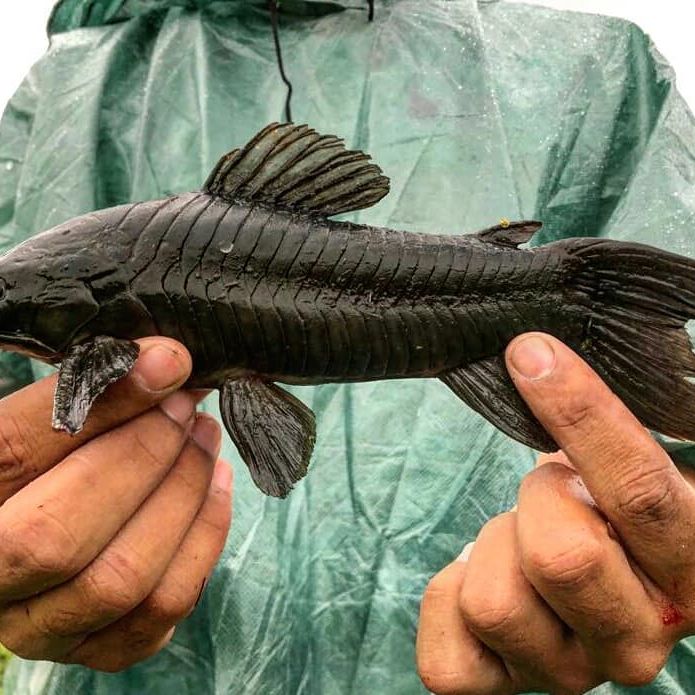
Implementing an integrated pest management (IPM) strategy is also important, as controlling pests can significantly lower disease risks.
| Prevention Strategy | Description |
|---|---|
| Sanitation | Keep areas clean to reduce pathogen exposure |
| Resistant Varieties | Choose plants less likely to acquire diseases |
| Watering | Apply adequate amounts without oversaturating |
| Crop Rotation | Alternate crops to interrupt pathogen life cycle |
| Plant Spacing | Prevent plant overcrowding to limit disease |
| Monitoring | Constantly check for signs of disease in plants |
Vigilance and adoption of these strategies can contribute immensely to a healthy plant environment, curbing the spread of diseases.
Breeding Brown hoplo In Aquarium
For aquarists looking to breed the fascinating Brown Hoplo, careful attention to their unique nesting preferences is key. These fish are known for building bubble nests at the water’s surface, meaning an aquarium with floating plants or similar objects is essential to mimic their natural breeding environment.
The male Brown Hoplo is a dedicated guardian, vigilantly watching over the eggs and fry. To support his efforts, maintaining a calm and stable aquarium setting is critical during the breeding period. Minimizing disturbances ensures the protective male can perform his role effectively.
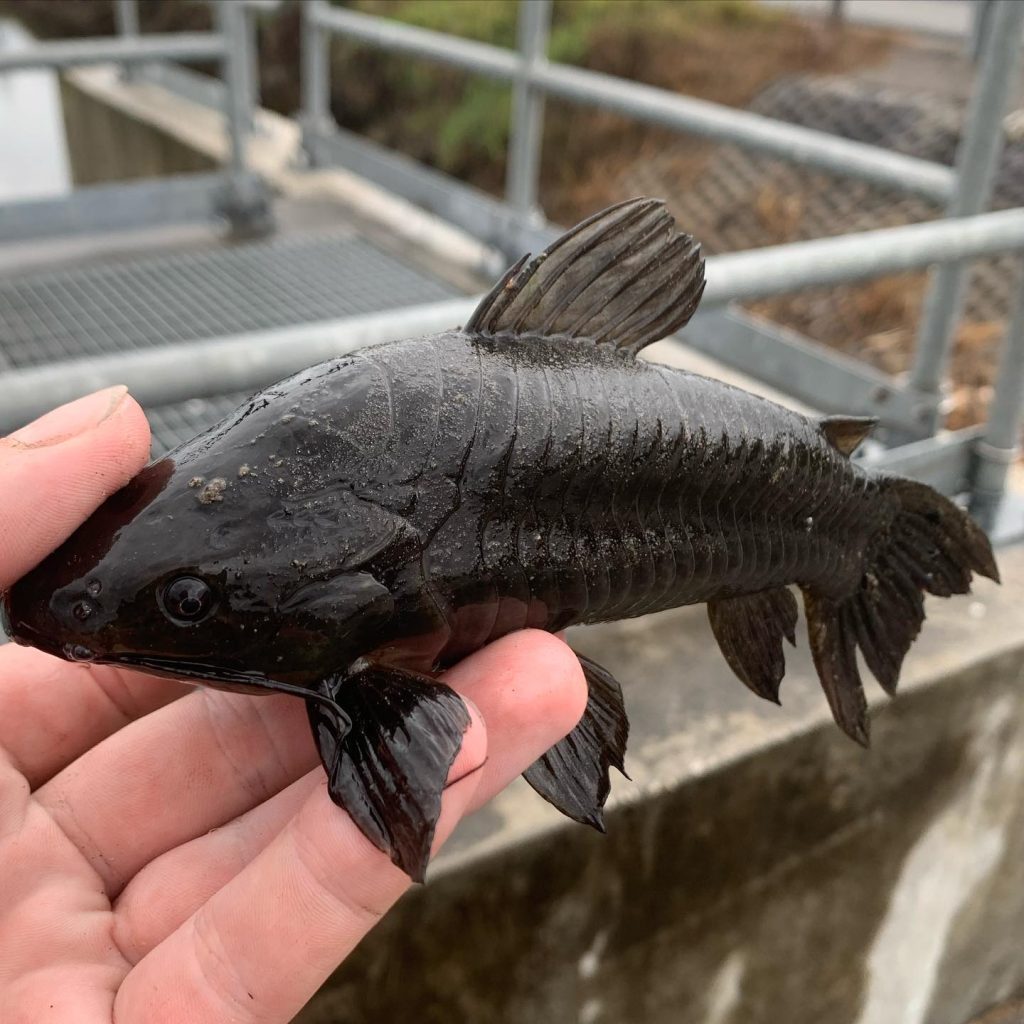
Temperature plays a role as well; breeding tanks should hold warmer water, ideally between 77-82°F, to foster ideal conditions for egg laying and hatching. Diet also impacts breeding success—prior to breeding, offer the Hoplo pair a diverse selection of live or frozen foods to prime them for reproduction.
Patience is a virtue when breeding Brown Hoplo. It may take several tries before witnessing a successful spawn. Creating the right environment and conditions is the key to encouraging a fruitful breeding.
| Breeding Requirement | Specification |
|---|---|
| Nesting | Floating plants to build bubble nests |
| Tank Environment | Peaceful, well-established |
| Water Temperature | 77-82°F (25-28°C) |
| Diet | Varied, live or frozen foods |
| Breeder’s Patience | Multiple attempts may be necessary |
With commitment and the right setup, aquarists can enjoy the rewarding experience of breeding Brown Hoplo in their own aquariums.

